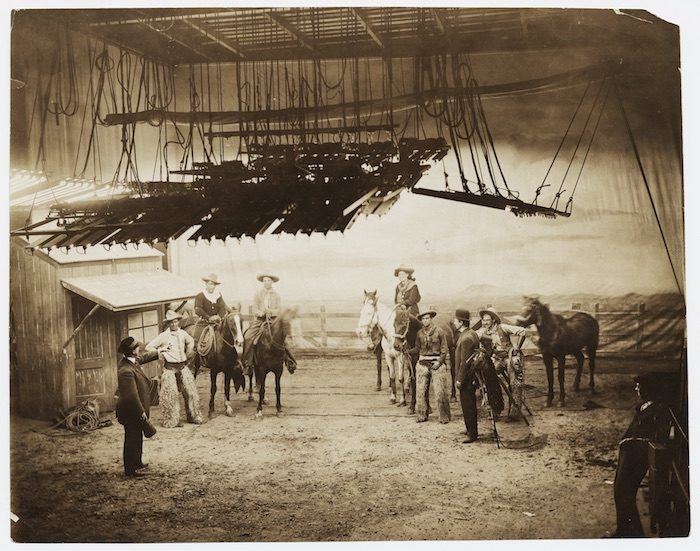In its heyday, Chicago’s Essanay Studios was one of the industry’s most prominent producers of silent films.
Founded in 1907 by George Spoor and Gilbert Anderson, Essanay (“S” and A”) was based in Uptown and known for its comedies and westerns. Its stars included Charlie Chaplin and Gloria Swanson, and cofounder Anderson also played a part in his company’s success—he starred as “Bronco Billy” in short westerns and produced one a week for 376 straight weeks.

Film set for a silent western featuring Gilbert M. Anderson as “Broncho Billy” at Essanay Studios in Chicago, c. 1910. CHM, ICHi-016886
While Chaplin was at Essanay from only 1915 to 1916, he was undoubtedly its biggest star. Best known for his iconic role as the bumbling, childlike Tramp, he was also in several shorts, such as The Champion, The Bank, Shanghaied, and His New Job, which put Essanay on the industry map. However, warmer weather and higher pay beckoned Chaplin to the Mutual Film Company in Hollywood, and his departure expedited the decline of Essanay, which is now remembered by only the most serious movie buffs. Learn more about Chicago’s film history.
Digital Chicago
Developed in partnership with Lake Forest College, Digital Chicago is a collection of digital projects about forgotten or at-risk aspects of Chicago’s history and culture. Musicologist Don Meyer sought to explore the musical practices of silent films during the Progressive Era, so he recreated the music of Essanay’s film Max Wants a Divorce (1916) as it might have been heard in theaters at the time. Listen now.